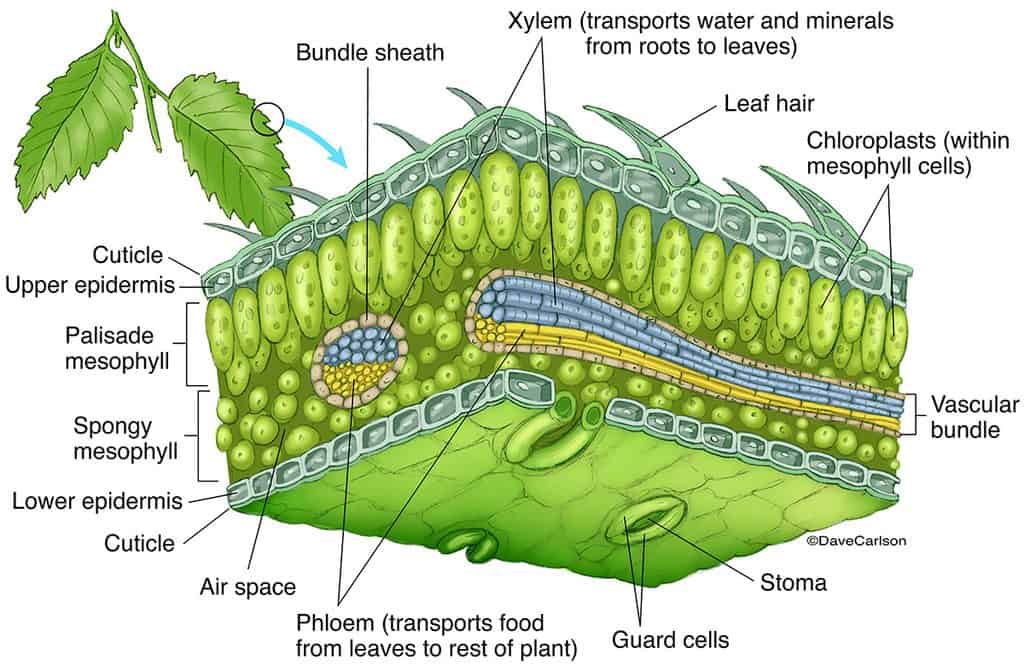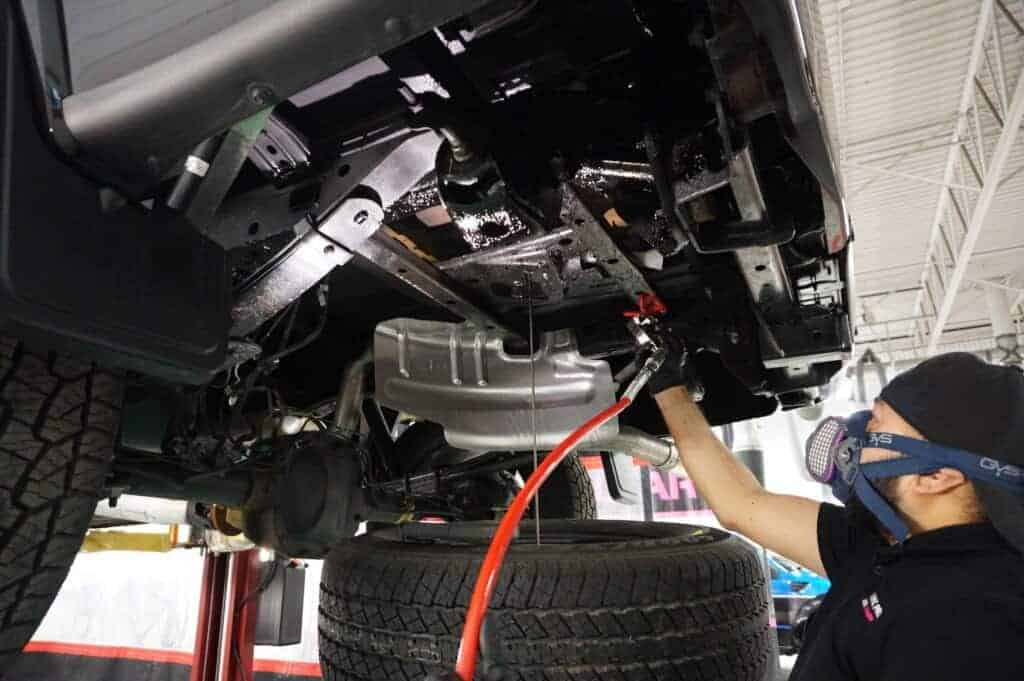Autumn brings with it images of football parties, backpacking and camping adventures, campfires with marshmallows, pumpkin spice everything, and loads of brilliantly hued falling leaves. But those gorgeous golden fall leaves have some nasty ulterior motives in mind, and if they are not removed from your vehicle ASAP, some pretty unpleasant surprises will soon begin to surface.
The headaches associated with the beautiful colors that are produced during fall’s seasonal changes go well beyond hours of leaf-blowing and raking. When mixed with rain, morning dew, and late fall snowstorms, falling leaves have the ability to produce a plethora of pain-in-the-ass paint-related problems. Is it just me, or were we just popping P’s profusely for a hot minute there?
It’s time to dive into a few fall leaf facts, like a kid plunging headfirst into a freshly raked pile on the lawn. While there, we’ll explore the science behind what falling tree leaves, how they damage paint, why water escalates the situation, and what can be done to prevent this problem from occurring in the first place.
How Does Leaf Damage Begin?

While a single leaf is not going to dent or scratch your vehicle, it can stick to the paint, windows, and other exterior surfaces if there is moisture in the air. On the upside, if both the vehicle and the leaf are dry, the fallen piece of vegetation will more than likely just bounce off the surface, or blow away when the vehicle gets up to speed.
However, throw in a splash of precipitation, or even just a little morning dew related condensation, and that leaf is going to stick to your car like dog shit on a shoe. But there’s way more to this scenario than just a few leaf outlines and hard water spots, for Mother Nature continues to produce more contaminants than one might expect.
The Science Behind Leaf Etchings

Leaves that fall from trees during the autumn season are part of a controlled process, that prepares the tree for winter’s damaging wrath. Cooler temps and shorter days cause the hormones within the tree to cut chlorophyll production, which is precisely when all of those colorful (and ugly-ass brown) pigments begin to emerge.
As the vessels that channel water and sugars from one part of the plant to another shut down, something referred to as the abscission layer forms where the leaf connect to the branch. With the abscission layer slowly cutting the leaf from the plant, leaves begin to fall, and the tree enters its dormant winter mode.
The issue, is that during the warmer months, when sunlight is absorbed by the leaves, all that chlorophyll creates a crap-ton of water, carbon dioxide, oxygen, and sugar. While photosynthesis offers some amazing perks for both the deciduous tree and its foliage, it wreaks havoc on things like automotive clear coat.

The epidermis of the average leaf secretes a wax-like substance, which unlike a natural carnauba wax, is not good for protecting your car’s paintwork, as it is a rather acidic substance.
Food-producing task complete, the acid and tree sap loaded leaf joins forces with H2O, thus forming a delightful little leaf-shaped pattern in your car’s clear coat. But how does water increase the potency of deciduous tree leaf acidity?
Water has long been known for its ability to accelerate the corrosion process. But it also causes leaves to stick to surfaces for prolonged periods of time, therefore allowing the acids contained within said vegetative matter to have ample time to leave an acid-rich deposit upon whatever surface it has ben slapped atop.
Hours, days, weeks, there is no set timeframe for leaf etchings to form atop a clear coat. What is for certain, is that excessive leaf buildup on a vehicle’s exterior surfaces will cause all manner of paint and clear coat related malady to form, culminating with the development of pitting and corrosion, and ultimately… rust.
Quick Nerd Note: From tree sap and pine resins, to pollen and other allergy related contaminants, all of these airborne threats are notorious for being the driving force behind a parked car’s paint deconstruction.
The Many Risks of Falling Leaves

While falling leaves can be attributed to automotive accidents caused by poor traction and paint damage, there are a few other dangers to this seasonal “shedding.”
From leaf-clogged radiators leading to overheating issues, to constricted cabin air filters and engine air intake filters, dead leaves pose a real threat to automobiles. There have even been instances of leaves becoming trapped between the brake pads and the disc rotors of automobiles, thus interfering with the system’s ability to provide sufficient amounts of stopping power.
Oh, and there’s the whole fire risk side of the equation, where dried leaves become trapped in the engine bay, catch fire, ignite an undetected oil leak, and boom… time to call the insurance claims adjuster.
4 Ways to Protect a Car From Leaf Damage

The best way to protect any vehicle from potential leaf damage is to remove leaves as soon as they settle on a surface. That’s not to say that you should pull over on the side of the highway to peel a stuck leaf off your hood during rush hour traffic, but you should definitely try and remove them when the vehicle is not in motion.
Here are a few additional tips that can help keep those pesky leaf spots at bay… or bay leaf spots from acting pesky… or something to that extent…
1.) Don’t Park Under Trees… Duh…
It may sound like common logic, but you’d be surprised by the number of people who park beneath the stretching arms of a massive hardwood during an autumn rainstorm. Do your paint a favor, and park in an open area, well away from autumn foliage, or better yet, within the confines of a sheltered garage structure.
2.) Remove Fallen Leaves Quickly
When combined with a splash of acid rain, the organic compounds within a leaf will start to eat away at a clear coat within just a few hours. While major damage and stains typically take a few days to develop, minor marring can occur when UV ray exposure follows shortly thereafter. Spray leaves away with water or a blower, and if you see etching lines beginning to form, break out those scrubbing buckets, because that means it’s car wash time.
3.) Wash Your Car Every Week in Autumn
Autumn leaves aid in the embedding of tree sap, resin, pollen, and other plant-based particles into clear coat and paint. By washing the vehicle every week with the two-bucket method, a high quality car shampoo, and a microfiber chenille wash mitt, you will not only keep these unpleasant natural occurrences from finding a permanent home on your car’s exterior, but you’ll make it look like autumn weather never happened in the first place.
4.) Protect Your Car’s Paint With a DIY Ceramic Coating
Since leaf damage is caused by leaves landing on a clear coating, and then eating away at it with the aid of a little moisture, the need for a surface protectant becomes all the more obvious. The simple act of applying some sort of protectant on top of a clear coating can significantly reduce leaf-related paint damage, with nano ceramic coatings being the best of the bunch.
Once fully cured, a nano ceramic coating creates this extremely flat and smooth layer of protection that only measures a few microns in thickness, and lasts for years on end.
DIY nano-ceramic coating kits are especially good at preventing leaf damage. Super easy to apply, and loaded with silica (SiO2), these products contain a liquid and contaminant repelling hydrophobic property, which makes them extremely resistant to things like sticky, wet leaves.
Parting Shots

If you’re looking for the best, long-lasting, paint protection options, a DIY ceramic coating is arguably the best solution. Plus, those cooler temperatures make it easier and more convenient to apply the coating yourself.













1 comment
michael froggitt
No trees where I live , none where I work . But I do find the most annoying thing I have to put up with a site that won’t let you unsubscribe and tells you there is an error . Know what I mean just can’t polish that away
No trees where I live , none where I work . But I do find the most annoying thing I have to put up with a site that won’t let you unsubscribe and tells you there is an error . Know what I mean just can’t polish that away